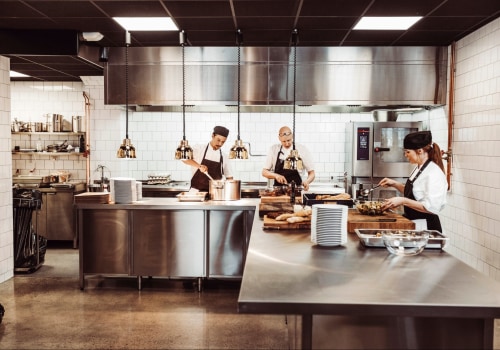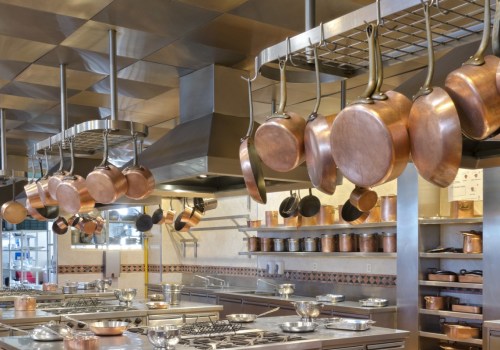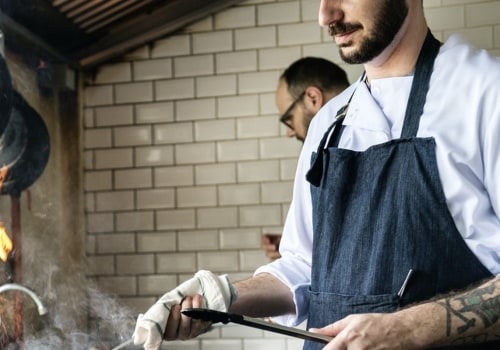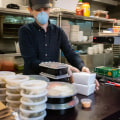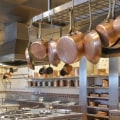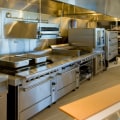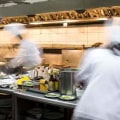Ghost kitchens are essentially restaurants with no space to eat. Its purpose is to sell and fulfill orders for food online for delivery using third-party applications such as Grubhub, UberEats and DoorDash, or with its own delivery operation. As a result, they usually don't have a visible showcase. A ghost kitchen, also known as kitchen in the cloud or dark kitchen, is a cooking operation that prepares dishes only at home.
It does not offer an indoor dining room, self-service or parking for guests. This makes it impossible for customers to dine and run. Basically, it's a physical space for operators and chefs to create food for deliveries. In short, ghost kitchens are physical spaces for operators to create food for consumption outside the facility.
And in apps like Grubhub and DoorDash, listings of restaurants that operate with ghost kitchens don't usually look different from physical establishments. For example, where I live in Northern Colorado, there's a restaurant called Rocco's Ravioli that appears on apps. But Rocco's has no shop window. It's a food delivery service that makes food in a ghost kitchen.
A ghost kitchen is a professional food preparation and cooking facility or a restaurant created for the preparation of meals only at home. One of the main problems that the ghost kitchen concept is solving for today's restaurants is the reduction of foot traffic for restaurant visits, adapting to change in consumer behavior and reducing overhead costs. When you remove all the tables and chairs, you have a ghost kitchen or, in other words, a restaurant that only delivers to your home. This means that ghost kitchens rely heavily on third-party delivery apps, such as Grubhub and UberEATS, to attract customers and deliver orders.
Alternatively, a restaurant that is part of a ghost kitchen can have its own online ordering software and a POS system and receive orders, also known as “native online orders”, meaning that the ghost restaurant has an internal method for receiving online orders that reduces costs from third parties. More and more often, the food you order from a home delivery application is prepared by chefs who work for a restaurant that doesn't really exist, at least not in the traditional sense. Ghost kitchens are usually located outside urban areas and focus on preparing and delivering your food at a fast pace. Either way, anyone can cook your hamburger, tacos or pizza anywhere, making the ghost kitchen concept so lucrative and attractive to homeowners and investors.
However, as pandemic-related restrictions relaxed, the trend of ghost kitchens remained strong. While the high fees charged by major delivery services could be mitigated or included in the price, food delivery teams working in ghost kitchens could find a way to make a living. This type of ghost kitchen is ideal for adding a new source of income and experimenting with new dishes at the local market. Ghost kitchens can operate from existing restaurant brands or function as stand-alone facilities.
Ghost kitchens are food preparation operations without waiters, dining room or parking; in reality, without any public presence. Many traditional restaurant owners are starting to manage a ghost kitchen to complement their main establishment. If you own a small restaurant or business and you not only want to stay in business but also grow your restaurant, then the ghost kitchen concept is an option worth considering. The first difference is that restaurants offer food service and possibly a takeaway option, while ghost kitchens only offer home delivery.
You can use your ghost kitchen to try out new concepts for your menu and increase the reach of your business. The concept of a ghost kitchen has become an important game in the restaurant industry as a response to the change in consumer behavior. Most restaurateurs invest in a ghost kitchen to join the food delivery craze that is taking over the restaurant industry. Some small food operators used ghost kitchens to gain a foothold in the market at a time when opening a standard restaurant with a dining room would have been unthinkable.
. .
